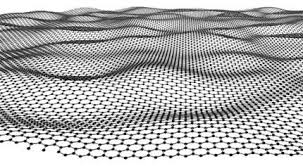David Tong: Lectures on Applications of Quantum Mechanics
This is an advanced course on quantum mechanics. It covers a wide range of topics, including an introduction to condensed matter physics and scattering theory. Please do email me if you find any typos or mistakes.
Cambridge students: The lecture notes on this page contain substantially more material than is needed for the
Part II course. A truncated set of notes that is closer to the syllabus
can be found here.
Content
- 1. Particles in Magnetic Fields:
PDF
Gauge field, gauge transformation; Landau levels, degeneracy; Aharonov-Bohm effect; Magnetic monopoles, Dirac quantisation; Spin in a magnetic field, spin precession. - 2. Band Structure:
PDF
Electrons in one dimension, tight-binding, nearly free electrons, Floquet matrix, Bloch's theorem; Bravais lattices, cubic, BCC and FCC, the Wigner-Seitz cell, the reciprocal lattice, the Brillouin zone; band structure, crystal momentum, crysallographic notation, nearly free electrons in 3d, tight-binding in 3d; Wannier functions, localised and extended stats, LCAO - 3. Electron Dynamics in Solids:
PDF
Fermi surfaces, metals vs insulators, graphene; Bloch electrons; effective velocity and mass, semi-classical equations of motion, Bloch oscillations, holes, Drude model; magnetic fields, cylcotron frequency, Onsager quantisation, de Haas-van Alphen oscillations. - 4. Phonons:
PDF
Monotonic chain; diatomic chain, optical and accoustic bands, Peierls instability; Quantization; Field theory. - 5. Discrete Symmetries:
PDF
Parity; Time Reversal, Kramers' degeneracy. - 6. Approximation Methods: PDF
The variational method; the helium atom; bound states, the Yukawa potential, the virial theorem; excited states. WKB, Semi-classical expansion, Linear potentials and the Airy function, Bohr-Sommerfeld quantisation, Tunnelling; The Sudden approximation, Quantum quenches; The Adiabatic approximation; Berry phase; The Born-Oppenheimer approximation, Molecular binding. - 7. Atoms: Postscript PDF
Hydrogen; Spin-Orbit coupling, Fine structure, Hyperfine structure; Helium, Exchange energy; Hartree method, Slater determinant, Hartree-Fock method. - 8. Atoms in Electromagnetic Fields: Postscript PDF
The Stark effect; The Zeeman effect; Rabi oscillations, Spontaneous emission, Selection rules, Photons, The Jaynes-Cummings model. - 9. Quantum Foundations: Postscript PDF
Entanglement, The EPR paradox, Bell's inquality, CHSH inequality, GHZ states, The Kochen-Specker theorem; Entanglement is a resource, The CHSH game, Dense coding, Quantum teleportation, Quantum key distribution; Density matrices, The Bloch sphere, Entropy; Projective measurements, Generalised measurements; Open quantum systems, Decoherence, The Lindblad equation. - 10. Scattering Theory:
Postscript
PDF
Scattering in one dimension, reflection and transmission coefficients, S-matrix, bound states, resonances; Scattering in three dimensions, the cross-section, the scattering amplitude, partial waves, phase shifts and the optical theorem, a hard sphere, bound states and resonances again; the Lippmann-Schwinger equation, the Born approximation, Yukawa and Coulomb potentials, the Born expansion; Rutherford scattering, the hydrogen atom; Scattering off a lattice, Bragg condition, structure factor, Debye-Waller factor.
Problem Sheets
- Problem Sheet 1: Postscript PDF Scattering
- Problem Sheet 2: Postscript PDF Variational Method, 1d Band Structure
- Problem Sheet 3: Postscript PDF 3d Band Structure; Fermi Surfaces
- Problem Sheet 4: Postscript PDF Phonons; Particles in a Magnetic Field
- Notes on Spherical Bessel Functions:
Postscript
PDF
Quantum Mechanics on the Web
- Applications of Quantum Mechanics An earlier version of this course by Ron Horgan
- Quantum Mechanics by Robert Littlejohn at Berkeley
- Advanced Quantum Mechanics by Ben Simons in TCM, Cambridge
- Solid State Physics by Steve Simon at Oxford
- Solid State Theory by Manfred Sigrist at ETH, Zurich
- Quantum Information by John Preskill at Caltech

